
Things aren't always what they seem. Take this article for instance: despite what it may suggest, all of these buildings are real. They have a real foundation and real bricks and mortar binding them together. In form, they are as real as it gets. In function, however, they are outright fakes.
As a case in point, consider this red brick building in south Chicago. Who lives here - a retired general? Crazy cat lady? Distinguished scholar? Actually, no one lives here. No one ever has. The postman has never visited and a brace of persuasive Mormons have never crossed its threshold. That's because you're looking at an electricity substation, home to nothing more than a fat transformer and a lethal supply of volts.

South Chicago substation © yooperann
It turns out that substations masquerading as fake buildings is quite common. Residents are apt to take exception to a hulking transformer springing up next door; disguise it as a historic house however and they'll scarcely bat an eyelid - often because they've no idea it's even there.
Check this unassuming house in Brooklyn.
Some locals have walked past 58 Joralemon Street for years without realising it's a fake. There are clues that things may not be as they seem - the blacked out windows are a giveaway - but unless you were to climb the steps and peer through the keyhole, you'd have no idea that the house serves as an emergency exit for the subway system. When the subway was constructed in 1908, the building was purchased by Metropolitan Transportation Authority of New York, stripped out and converted into a ventilation system. The warm subterranean air that poured from the windows for decades earned the townhouse its nickname - the Shaft House.
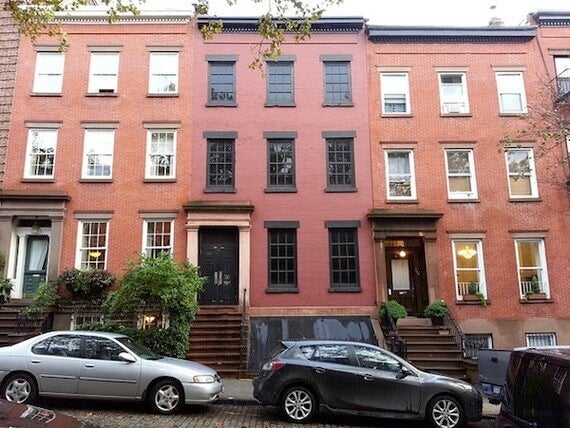
Who lives in the Shaft House? Not Shaft, disappointingly © Matt Green
New York isn't the only city to have pulled this stunt. One of the world's most famous fake buildings can be found in London. From the outside, 23 Leinster Gardens looks like this:
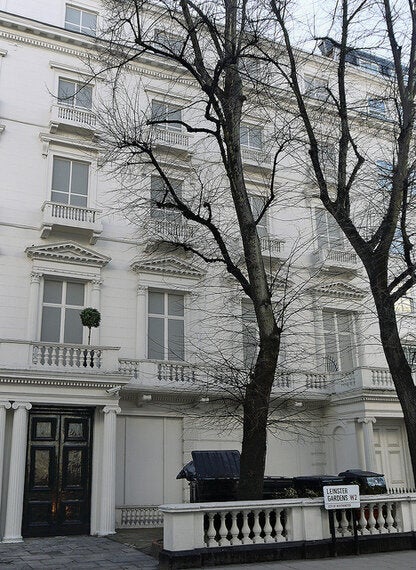
Just a mid-terraced London house, nothing to see here... © Duncan Harris
While on the inside it looks like this:
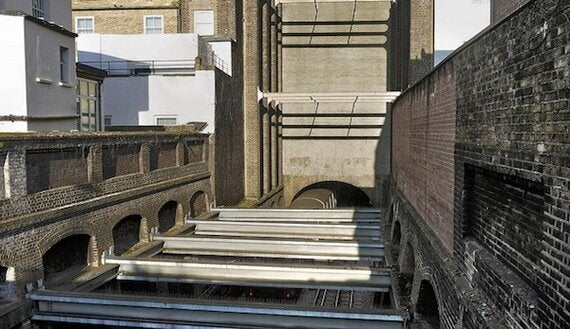
...wait, what? © Duncan Harris
In the 1860s, the construction of London Underground called for the house to be demolished. To preserve the street's character, the facade was retained, complete with dummy windows and a dummy door. The building soon entered popular culture, becoming the setting for a Sherlock Holmes story and a real life charity ball in which a con artist sold tickets and left bemused punters to knock vainly at the door that wouldn't open. Trolled hard. If you're thinking of ordering pizza to 23 Leinster Gardens by the way, you're not the first - it's been a favourite trick of pranksters over the years, one that Domino's have probably caught on to by now.
Back stateside, there are numerous examples of similarly disguised buildings. Com Ed, who constructed the substation featured earlier, built an array of incognito substations in the early 20th century. The Chicago substation below was designed by renowned architect Hermann V. Von Holst in 1925 to power the adjacent metropolitan railway.
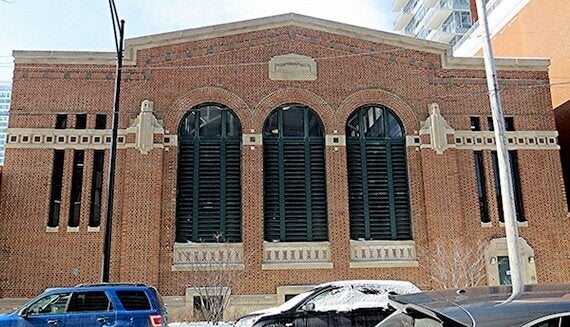
Transformers: buildings in disguise © Debbie
And here's Toronto's Glengrove substation, built in 1930, which soon acquired the nickname The Castle. As one web commenter noted, it looks like the setting for a murder mystery. Every house has its secrets, but the greatest deception of all can be found in those buildings whose very purpose is the antithesis of what they purport to be.

The Castle: beautiful building, crippling electrical bills © Ryan
If you're wondering whether there's a downside to situating a substation in a residential neighbourhood, incidentally, that's a yes. It turns out that massive amounts of current can generate massive amounts of heat - heat which, in rare instances, can lead to massive amounts of fire. Click here to see another Toronto substation going into full meltdown. That ain't no chip-pan fire.
While some fake buildings withstand scrutiny, even on close inspection, others reveal their true form the closer you get. This Parisian ventilation tower uses trompe-l'oeil to trick viewers into thinking that its artfully rendered windows are three-dimensional.
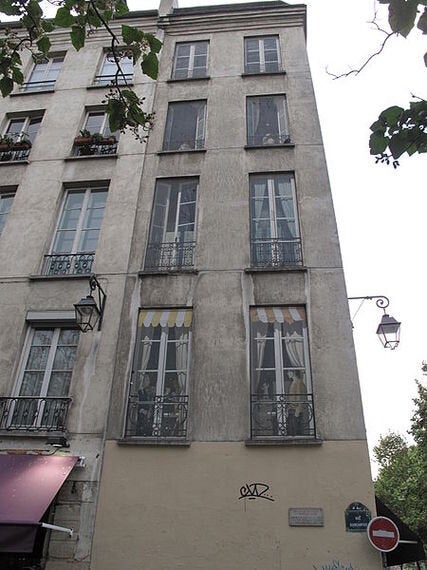
Rue Quincampoix: flatter than the average flat © Wikimedia CommonsThe greatest deception of all time wasn't so much a fake building as a fake barrio.

The American dream meets the Japanese nightmare © Boeing
Who would go to the bother of constructing an entire suburb out of plywood and chicken wire?
Boeing, that's who. During WWII, the aircraft manufacturer painstakingly concealed its manufacturing plant beneath an ersatz neighbourhood to deter Japanese bombers. Hollywood set designer John Stewart Detlie was hired to hide all traces of Plant 2. The $1 million project - a fortune by 1942 standards - saw the pseudo-suburb equipped with fake trees, fake houses and even fake street signs bearing names such as Burlap Boulevard and Synthetic Street.
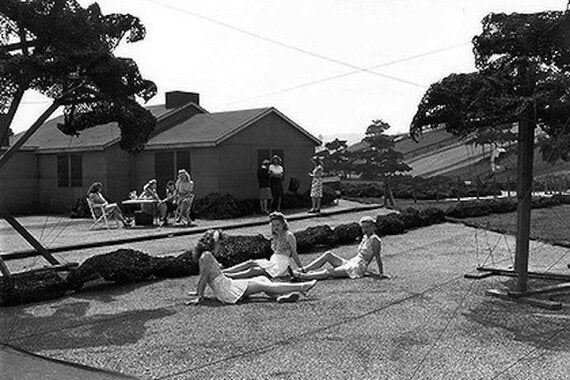
Fake plastic trees © Boeing
The houses didn't even reach full height, but from the air, who was gonna know? The deception even extended to releasing publicity shots after the war showing 'residents' going about their daily lives. Shortly afterward, Boeing dismantled the neighbourhood that never was; today no trace of it exists.
The next time you're out walking, pocket your phone and pay attention to the buildings you're passing. Look closely and you might just spot a trick.
Written by Kai Sedgwick, a travel writer for HomeAway.co.uk.